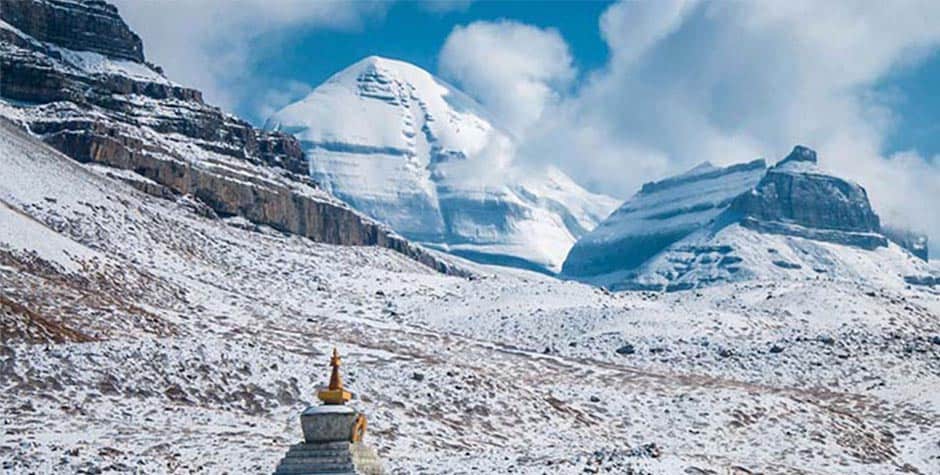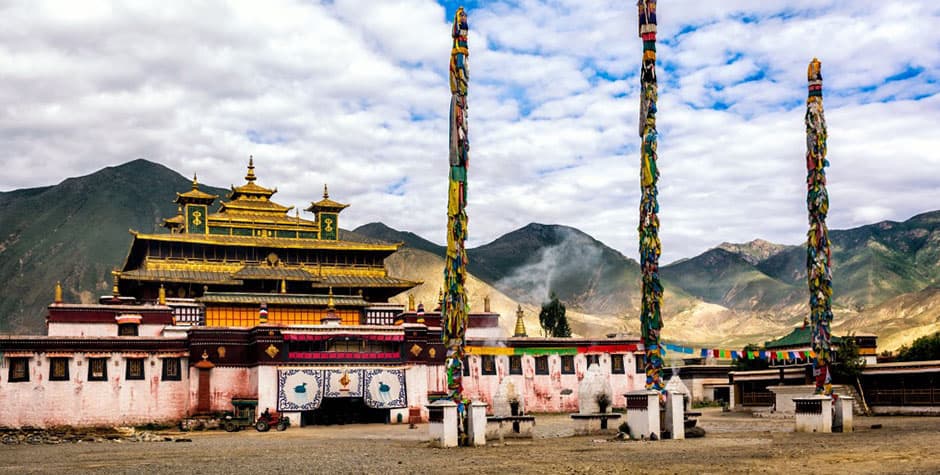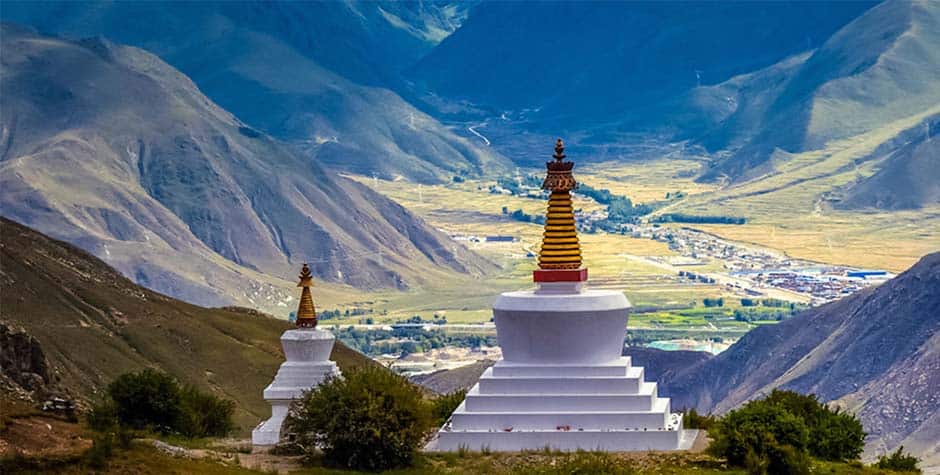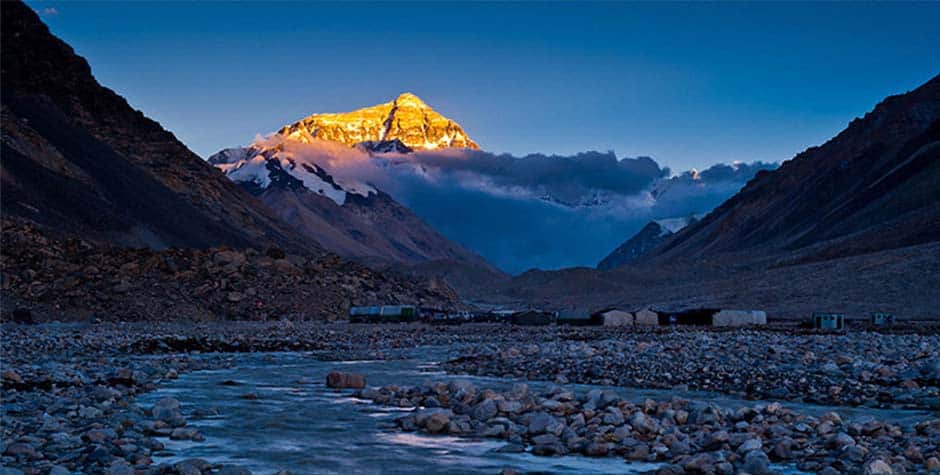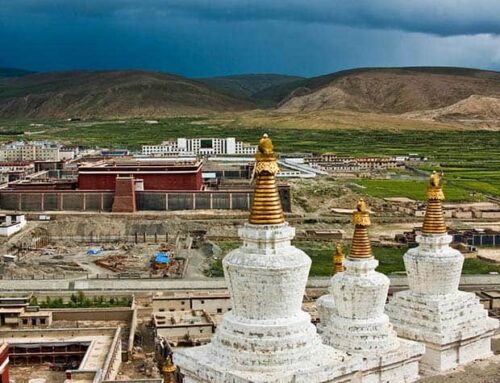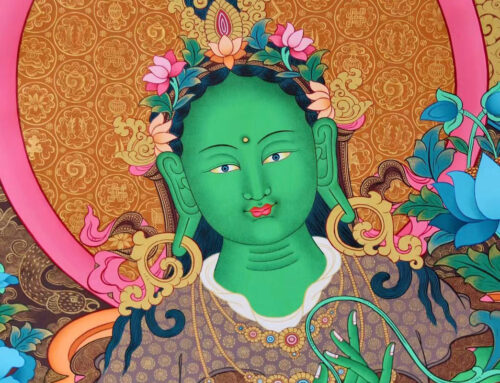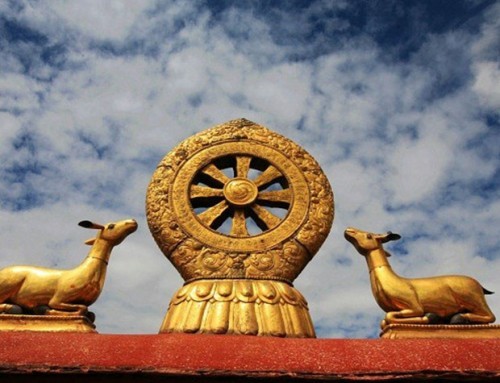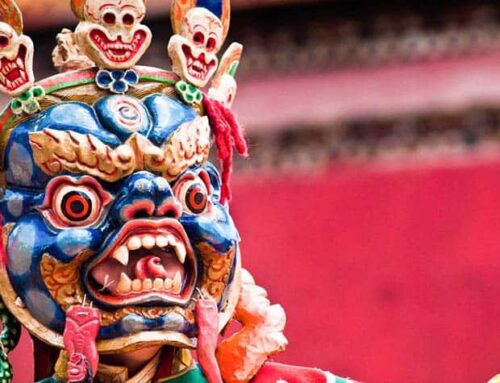Tibetan Yoga practice is called Luejong, which means training the body. It is an essential part of the path of spiritual practice and complements the training of the mind, which is called Lojong. In order to practice and meditate, both the right mind and body are required.
Traditionally Tibetan yoga is scared physical exercise. It is so secret that shall only pass from master to student in an oral lineage. there is no much of the written work of it. It is not like normal Yoga practices all over the world.
Tibetan Yoga is joined with mental exercise and visualization of channel and chakras, and it the practice of Lung (psychic wind) based on spiritual and mental development. The lung regulates the body and the function of the energy, and visualization of the divine Buddha Vajrayogini blesses the body, mind and transform it into the pure state of Buddha-nature.
The yoga exercises to remove negative energies from the channels and chakras, release the inner tension and stress and harmonize the subtle wind through physical positions and movements. The yoga technique helps tame the mind and provide spiritual realization by stimulating channels and chakras.
One should become fully proficient in the practice of Naropa’s Six Dharma or Yoga practices with the realization to the method of Marpa, with proper motivation, disciple and correct to lead oneself to the state of Buddhahood.
There are six basic physical exercises and thirty-nine secondary exercise. The six basic physical exercises are introduced to restore the energy of the general wind and five principal wind functions in the four chakras during the retreat.
following are the benefit of Yoga practice
- Prolongs life
- Improves memory
- Cleans the channels and chakras
- Gives spiritual experience
- Prevents various physical and energetic disorders
- Increase the awareness
Six Tibetan Yogas of Naropa
Marpa Lotsawa, One of the greatest master in Tibetan Buddhist history and Master of Milarepa. He went to India several times and received many teachings of Buddhist Sutra and Tantra and secret tantric practice from the great Indian master Naropa and others. Especially, he received Naropa’s six dharmas or Yoga practice came back to Tibet to introduced it. He also translates numerous sutras, tantras, and Medical texts and introduced a new tantric tradition in Tibet (Sarma tradition). From this tradition, the new tantric tradition of Gelugpa and Kagyupa schools began.
The Six Yogas are
- Tummo, Yoga of Psychic Heat
- Gyuma, Yoga of the illusory body
- Odsal, Yoga of clear light
- Phowa, Yoga of consciousness transference
- Nyilam, Yoga of dreams
- Bardo, Yoga of the intermediate state
Marpa taught Naropa’s six yogas to his disciples including, Milarepa, Tsurton, Lama Ngogpa. He became the founder of the yoga and meditation practice in Tibet. His most popular student is Milarepa. From his teachings, a great number of School of Tibetan Yoga developed in Tibet.
The practice of present Naropa’s six Yogas came from Pal Phagmogrubpa. from whom Tsongkhapa received and defused it in the Gelugpa school. There is a lot of hidden practitioners in Gelukpa schools. It is called Gandhen Chagya Chenpo. Tibetan Yoga is one of the secret practice tradition to transmute the unenlightened mind into the Buddhahood.
Different Schools of Tibetan Yoga
The two popular Tibetan Yoga school in Tibet are Zhalu and Drigung Phowa Chenmo monastery. They would select the right participants and Give Loong Yoga training for twelve years. The training starts every monkey year and finished in the coming monkey year after twelve years. The practitioner uses special colors of clothes to improves the power of the Tummo Fire. They follow strict discipline according to tradition. Every winter of the 12th year, during the coldest season in Tibet, all the trainees should demonstrate their technique and power of the Loong meditation exercises.
The practitioners seated in the lotus posture, have to jump up from inside of the training room to the rood through the half-foot square open window with losing their sitting posture. After this demonstration, the practitioner has to make a great journey by the wind power ( which give extremely fast walking) and should return in the due time. The goal of Tibetan Yoga is the achievement of enlightenment.


Tenzin Travel is the best Tibetan Travel agency in Tibet. Our agency is one of Tibet’s most experienced tour operators, with over 20 years in the industry. Founded by a local Tibetan family with decades of expertise as guides, managers, and route planners, we craft personalized itineraries for every traveler. We are the highest-rated and most recommended Tibet travel agency on TripAdvisor, Google, and LonelyPlanet.
We can make holistic arrangements for your trip to Tibet, including a Tibet Travel Permit, a Tibetan tour guide, flight tickets, train tickets, vehicle arrangements, and hotel bookings in Tibet.
Our Lhasa office is just steps from Barkhor Square, and our all-Tibetan team ensures deep cultural, linguistic, and religious insights, setting us apart from other agencies.
Beyond tourism, we support Tibetan communities by donating a portion of each tour to local projects. Your travel to Tibet is about more than profit—it’s about the opportunity for us to give back.


